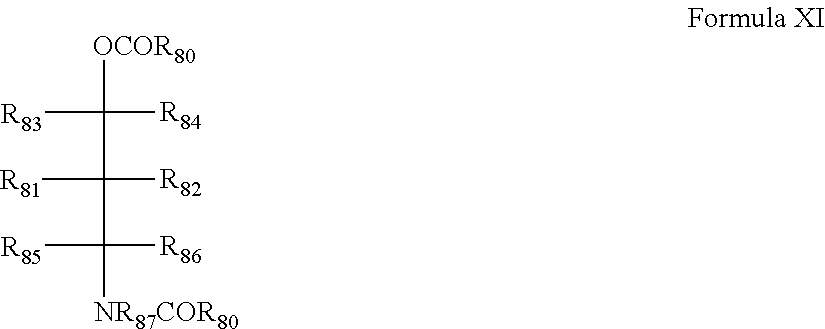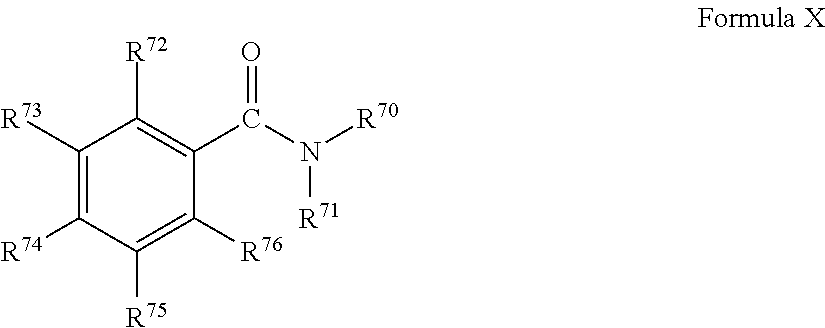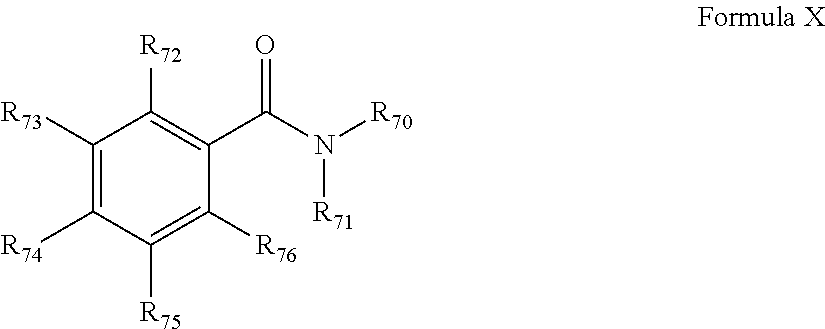Catalyst system for polymerization of an olefin
a catalyst system and polymerization technology, applied in the field of catalyst systems, can solve the problems of polymer blooming, affecting the stability of polymers, so as to achieve better statics and better results
- Summary
- Abstract
- Description
- Claims
- Application Information
AI Technical Summary
Benefits of technology
Problems solved by technology
Method used
Image
Examples
examples
[0416]Diethylamino triethoxysilane (DEATES) is an external electron donor that was synthesized according to Example 1 of U.S. Pat. No. 7,238,758 B2 which is incorporated by reference.
[0417]Procatalyst I Preparation
[0418]A. Grignard Formation Step
[0419]A stirred flask, fitted with a reflux condenser and a funnel, was filled with magnesium powder (24.3 g). The flask was brought under nitrogen. The magnesium was heated at 80° C. for 1 hour, after which dibutyl ether (DBE) (150 ml), iodine (0.03 g) and n-chlorobutane (4 ml) were successively added. After the colour of the iodine had disappeared, the temperature was raised to 80° C. and a mixture of n-chlorobutane (110 ml) and DBE (750 ml) was slowly added for 2.5 hours. The reaction mixture was stirred for another 3 hours at 80° C. Then the stirring and heating were stopped and the small amount of solid material was allowed to settle for 24 hours. By decanting the colorless solution above the precipitate, a solution of butylmagnesiumchl...
PUM
| Property | Measurement | Unit |
|---|---|---|
| boiling temperature | aaaaa | aaaaa |
| temperature | aaaaa | aaaaa |
| mould temperature | aaaaa | aaaaa |
Abstract
Description
Claims
Application Information
 Login to View More
Login to View More - R&D
- Intellectual Property
- Life Sciences
- Materials
- Tech Scout
- Unparalleled Data Quality
- Higher Quality Content
- 60% Fewer Hallucinations
Browse by: Latest US Patents, China's latest patents, Technical Efficacy Thesaurus, Application Domain, Technology Topic, Popular Technical Reports.
© 2025 PatSnap. All rights reserved.Legal|Privacy policy|Modern Slavery Act Transparency Statement|Sitemap|About US| Contact US: help@patsnap.com



